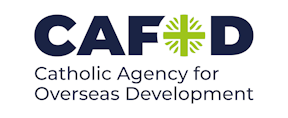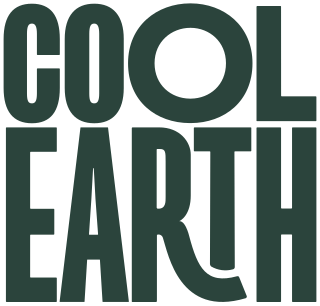
The Catholic Agency for Overseas Development, commonly known as CAFOD, is an international development and relief charity. It is the official aid agency of the Catholic Church in England and Wales.

Islamic Relief Worldwide is a faith-inspired humanitarian and development agency which is working to support and empower the world's most vulnerable people.

The National Lottery Community Fund, legally named the Big Lottery Fund, is a non-departmental public body responsible for distributing funds raised by the National Lottery for "good causes".

Interpal is the working name for Palestinian Relief and Development Fund, a British charity founded in 1994 that describes itself as a non-political charity to alleviate problems faced by Palestinians, and focused solely on the provision of relief and development aid to the poor and needy Palestinians the world over, but primarily in the Palestinian territories, Lebanon and Jordan.
UK Youth is a Hampshire based Charitable organization, which was founded in year 1911 to youth work.
King Charles III Charitable Fund (KCCF), formerly known as The Prince of Wales's Charitable Fund, is a United Kingdom-based charity fund. It provides grants to charity organisations in the United Kingdom and internationally. Grantee organisations vary in focus but fall under the umbrella of one of the fund's designated funding themes.

Cool Earth is an international NGO that funds Indigenous communities to protect endangered rainforests in order to combat the climate crisis and protect ecosystems.
The Sovereign Art Foundation (SAF) is a non-profit organisation established in 2003 by Howard Bilton, a tax lawyer and today's chairman of the Sovereign Group.
Tzedek is a UK-based registered charity organisation which aims to provide a Jewish response to the problem of extreme global poverty. Registered as a charity in 1993, Tzedek has a number of overseas development programmes, working closely with local NGOs to alleviate extreme poverty in Northern Ghana and Northeast & Southeast India. As well as supporting local NGOs within these regions, Tzedek aims to develop the leadership skills of young Jewish leaders within the community to provide a long-term, sustainable solution to global poverty.
UK Community Foundations (UKCF) is a registered charity that leads a movement of community foundations committed to positive social change in the UK through the development of “community philanthropy”. Community philanthropy involves people from all parts of a community working together locally to use the financial and other resources available to them to improve others’ lives.
The Birthday Honours List 2012 was released on 16 June 2012 in the United Kingdom, on 11 June 2012 in Australia on 4 June 2012 in New Zealand, on 15 June 2012 in Antigua and Barbuda, Barbados, Grenada, Belize, Saint Lucia, Solomon Islands, and The Cook Islands. The Birthday Honours List was released during the height of the Diamond jubilee celebrations, and was therefore styled The Birthday and Diamond Jubilee Honours 2012 in New Zealand, while United Kingdom celebrated the jubilee with a separate list later that year.
The New Year Honours 2014 were appointments by some of the 16 Commonwealth realms to various orders and honours to recognise and reward good works by citizens of those countries. The New Year Honours are awarded as part of the New Year celebrations at the start of January.
Pod Volunteer is a non-governmental volunteering organisation with an associated registered charity based in the United Kingdom.
Al-Khair Foundation (AKF) is an international Muslim aid NGO based in the United Kingdom and Turkey, and is the third largest Muslim charity in the UK. It was established in 2003, and aims to deliver aid to the poor and vulnerable, as well as education for the Muslim community. It specialises in humanitarian support, international development, emergency aid and disaster relief in some of the world's most deprived areas.
The 2016 Queen's Birthday Honours are appointments by some of the 16 Commonwealth realms of Queen Elizabeth II to various orders and honours to reward and highlight good works by citizens of those countries. The Birthday Honours are awarded as part of the Queen's Official Birthday celebrations during the month of June. The Queen's Birthday Honours were announced on 6 June 2016 in New Zealand and 10 June in the United Kingdom.
The 2018 New Year Honours are appointments by some of the 16 Commonwealth realms to various orders and honours to recognise and reward good works by citizens of those countries. The New Year Honours are awarded as part of the New Year celebrations at the start of January and were officially announced in The London Gazette on 30 December 2017. Australia, an independent Realm, has a separate honours system and its first honours of the year, the 2018 Australia Day Honours, coincide with Australia Day on 26 January. New Zealand, also an independent Realm, has its own system of honours.
The 2019 Queen's Birthday Honours are appointments by some of the 16 Commonwealth realms of Queen Elizabeth II to various orders and honours to reward and highlight good works by citizens of those countries. The Birthday Honours are awarded as part of the Queen's Official Birthday celebrations during the month of June. The Queen's Birthday Honours for the United Kingdom and the Commonwealth realms were announced on 8 June, except the honours for New Zealand that were announced on 3 June and for Australia on 10 June.
The 2020 New Year Honours are appointments by some of the 16 Commonwealth realms to various orders and honours to recognise and reward good works by citizens of those countries. The New Year Honours are awarded as part of the New Year celebrations at the start of January and were officially announced in The London Gazette on 27 December 2019. Australia, an independent Realm, has a separate honours system and its first honours of the year, the 2020 Australia Day Honours, coincide with Australia Day on 26 January.
The Queen's Birthday Honours for 2020 are appointments by some of the 16 Commonwealth realms of Queen Elizabeth II to various orders and honours to reward and highlight good works by citizens of those countries. The Birthday Honours are awarded as part of the Queen's Official Birthday celebrations during the month of June. The honours for New Zealand were announced on 1 June, and for Australia on 8 June.
The 2022 Queen's Birthday Honours are appointments by some of the 15 Commonwealth realms of Queen Elizabeth II to various orders and honours to reward and highlight good works by citizens of those countries. The Birthday Honours are awarded as part of the Queen's Official Birthday celebrations during the month of June. They were announced on 1 June 2022, in anticipation of the Queen's Platinum Jubilee. They were the last honours granted by the Queen before her death on 8 September 2022.





